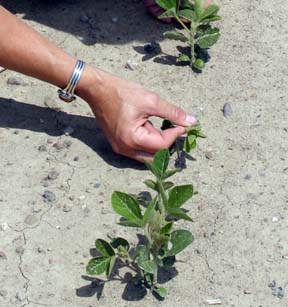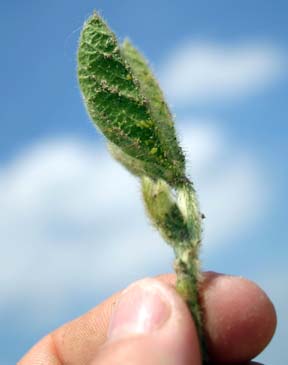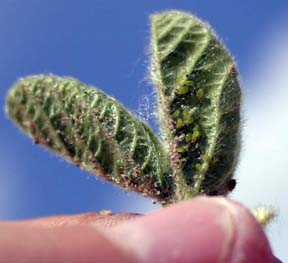Soybean aphid infestation on small soybeans
Editor’s note: This article is from the archives of the MSU Crop Advisory Team Alerts. Check the label of any pesticide referenced to ensure your use is included.
Soybean aphid flights have occurred over the last several weeks. We have also had storm fronts that may have carried soybean aphid greater distances and dropped winged aphids on bean fields. Once a winged aphid finds a soybean field, it moves from plant to plant, depositing several babies each place it stops. On the MSU campus, two research fields are 5-20 percent infested, depending on the location (near the edge facing the general wind direction, or towards the middle). One of these fields was planted in early May (V1 to V2 stage plants, Photo 1) while other was planted May 19 (not even V1 yet). At the MSU Bean and Beet Farm north of Frankenmuth in Saginaw County, my students report finding aphids last week, but I haven't visited the field yet. The aphids are concentrated on the new growth, which is hairy (probably protects from predators) and has more nitrogen (Photos 2 and 3). Bottom line – aphids are right on time, and in numbers similar to the previous aphid outbreak years of 2003 and 2005. However, we had the same situation in 2007, and then the outbreak fizzled out.



 Print
Print Email
Email





